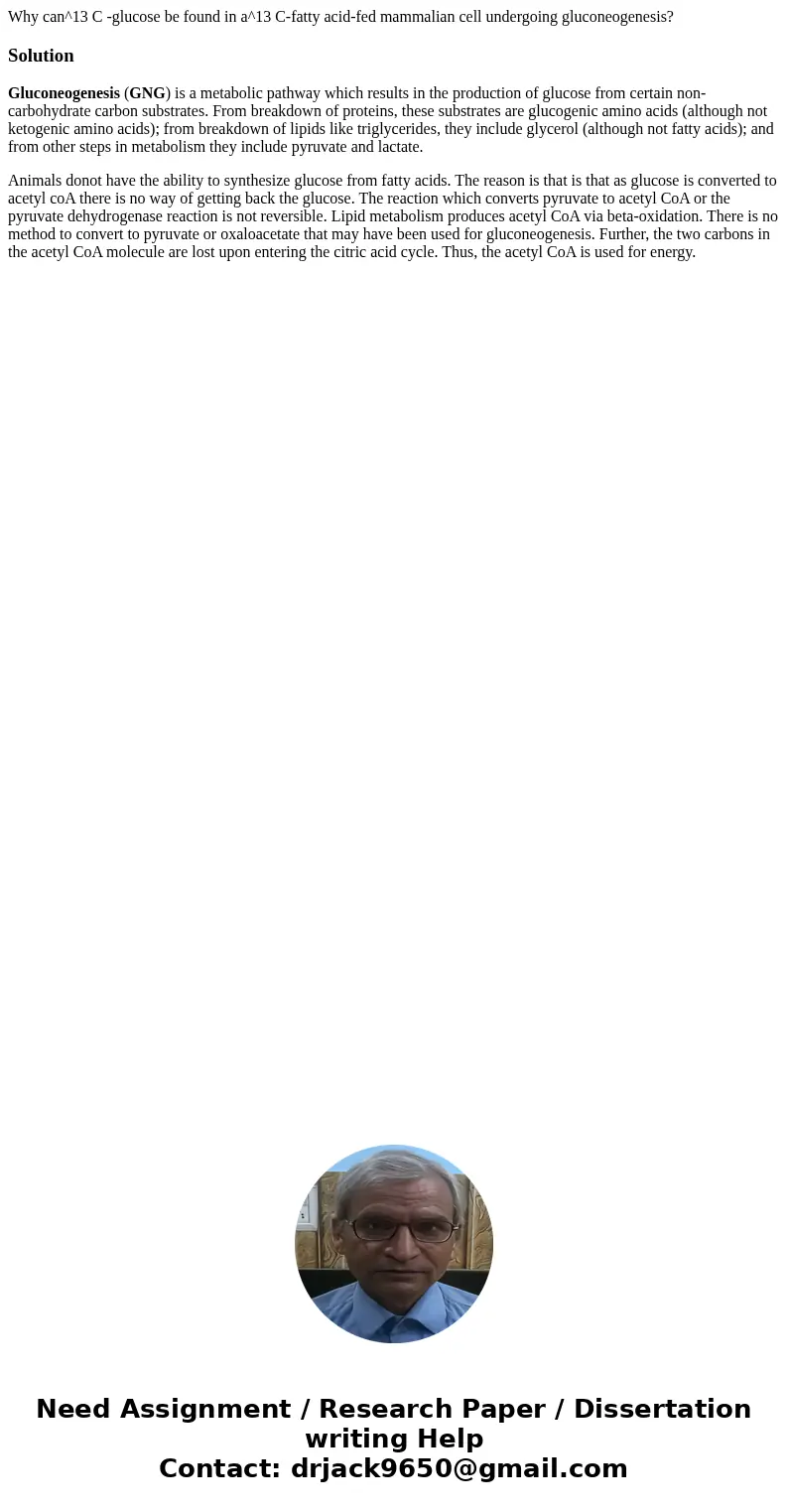Why can13 C glucose be found in a13 Cfatty acidfed mammalian
Solution
Gluconeogenesis (GNG) is a metabolic pathway which results in the production of glucose from certain non-carbohydrate carbon substrates. From breakdown of proteins, these substrates are glucogenic amino acids (although not ketogenic amino acids); from breakdown of lipids like triglycerides, they include glycerol (although not fatty acids); and from other steps in metabolism they include pyruvate and lactate.
Animals donot have the ability to synthesize glucose from fatty acids. The reason is that is that as glucose is converted to acetyl coA there is no way of getting back the glucose. The reaction which converts pyruvate to acetyl CoA or the pyruvate dehydrogenase reaction is not reversible. Lipid metabolism produces acetyl CoA via beta-oxidation. There is no method to convert to pyruvate or oxaloacetate that may have been used for gluconeogenesis. Further, the two carbons in the acetyl CoA molecule are lost upon entering the citric acid cycle. Thus, the acetyl CoA is used for energy.

 Homework Sourse
Homework Sourse